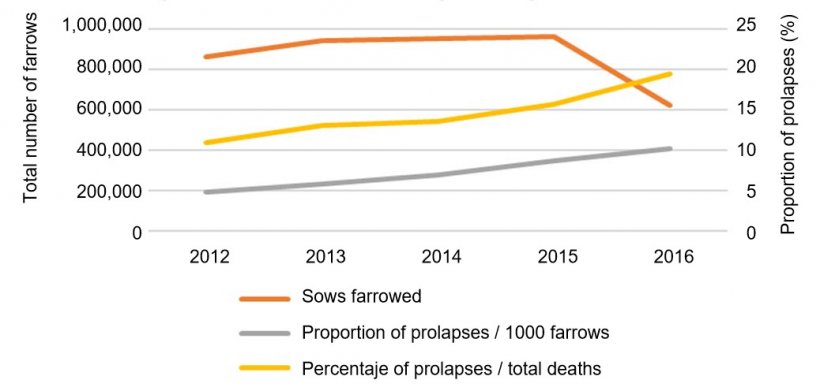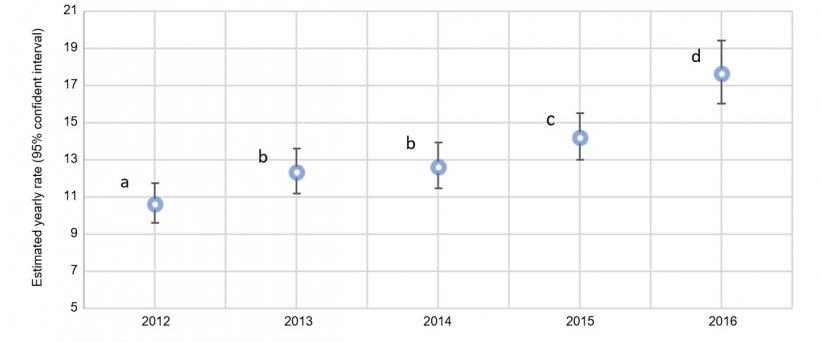Uterine prolapse is a condition that affects sows primarily around the time of parturition on which the uterus appears displaced outside the vulva. Despite the relevance and importance of this problem at the time of pig delivery and during the consecutive lactation period the listing of the verified etiologies continues to be uncertain for the swine industry. The cost of an individual uterine prolapse has been estimated at $500 - 700, not to mention the negative welfare implications. Although several causes have been speculated, the available literature is scarce and additional research is needed to further clarify the etiology. Since early 2013, swine companies have been experiencing an increase in the incidence of uterine prolapses in their herds. As a result, Elanco Knowledge Solutions (EKS) Analytics Team was contacted by a group of swine companies to help them analyze and interpret their data. A set of 2 articles will explain the results of this large study related to the longitudinal tendency of the sow mortality during all these years as well as the role of management practices, production parameters, and disease status as covariates in the trend analysis of uterine sow prolapses.
With regards of the first study, the objectives were: 1) to analyze the trends in prolapses of sows from 2012 to 2016 and 2) to specifically understand the importance of month and year in a representative group of swine companies from the North American swine industry.

Producers, veterinarians, and nutritionists attending a swine conference in early 2016 participated in the study. Sow herds from 7 production systems representing the major swine production states were voluntarily enrolled. Participant farms were asked to share their retrospective monthly production data. The information studied had "sow death with prolapse over sows farrowed", "sow deaths with prolapse over total deaths", and "total sow deaths over sows farrowed" as variables response. On the other hand, "month" (1 to 12) and "year" (2012 to 2016) effect were also accounted for. Additionally, "system", "farm within system", and "year within farm and system" were also considered in the analysis to account for some correlation within the data.
A total of 4,343,512 sow farrowing events from 153 farms in 2012 and 167 during the years of 2013 to 2016 were included in the study. The average percent of prolapse out of the total farrows ranged from 4.8 in 2012 to 10.2% in 2016 (Fig 1). However, we consider this number out of total number of dead sows in the system this number ranged from 10.9 % in 2012 to 19.5 % in 2016 (Fig 1). All years were statistically different from each other, with the exception of 2013 and 2014 (Fig 2). Month was also very significant in the analysis demonstrating an important seasonal pattern: the highest incidence during the coldest months (November to February) and the lowest during the summer months (June to August).


Results from this study indicate that the percentage of prolapsed sows per farrowing has consistently increased every year (significant from 2014-2016) as a percentage of total deaths with the incidence being higher during the winter months and the lowest during the summer months. This information is crucial to further our understanding in possible risk factors involved in this important problem during the time period of this study.
The authors would like to thank all swine companies participating in the study.



